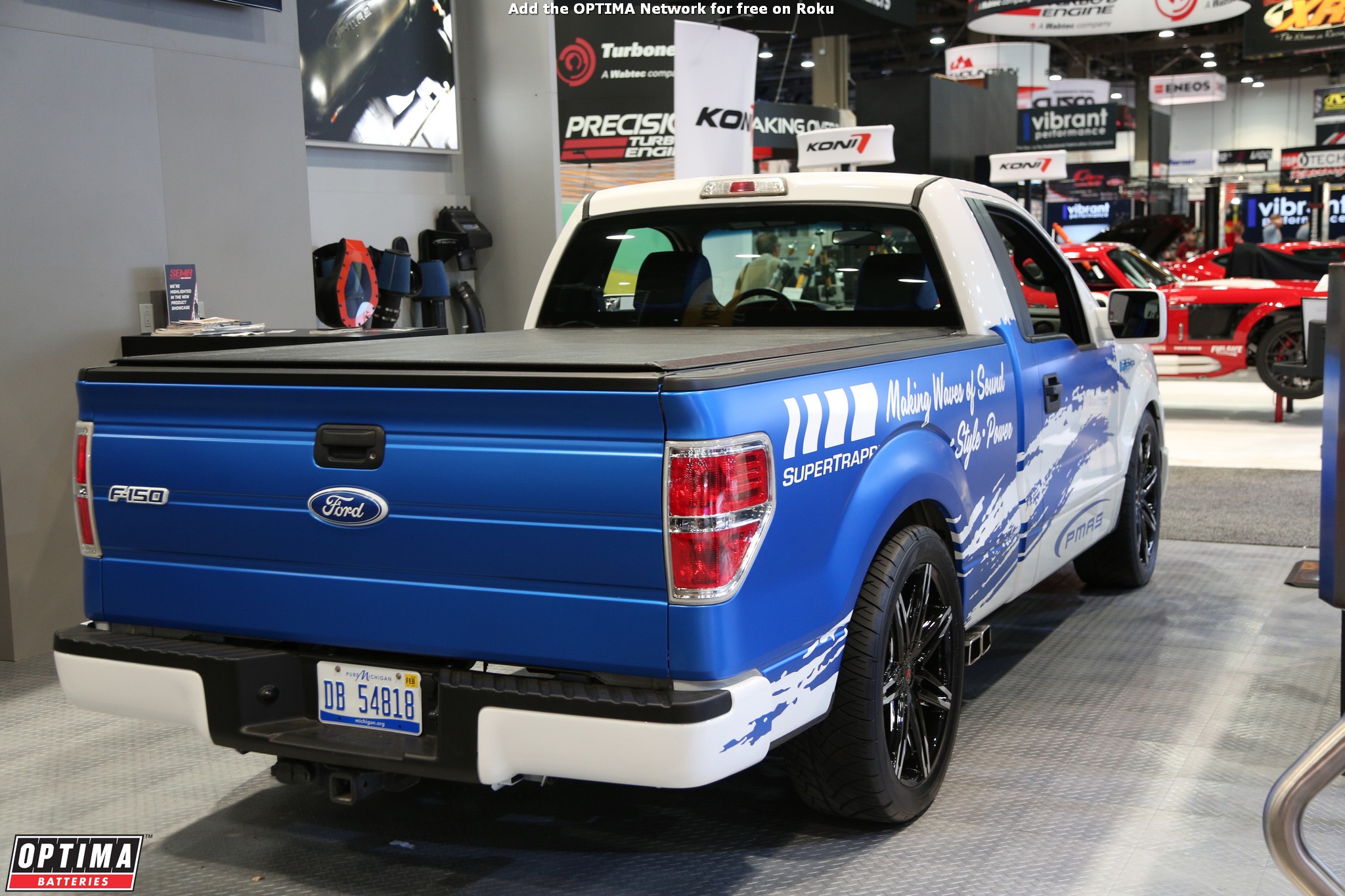How Long Does a Battery Last in a Ford F-150?

- Sponsor
- OPTIMA Batteries
- Location
- Las Vegas, Nevada


Modern pickup trucks, including Ford F-150s, are more demanding from an electrical standpoint, than ever before. That's due in large part to two significant factors- all the electrical accessories demanding power and how the trucks are being used. Newer Ford F-150 Lightning trucks can even use their batteries to power homes during power outages, but for the purposes of this blog, we'll be looking at what impacts the performance and lifespan of batteries that start the engines in gas-powered Ford F-150s.
We'll start by pointing out something that may not be obvious to the average F-150 owner- your battery has gotten significantly larger over time. How much larger? A 2000 Ford F-150 with a 5.4-liter V8 could start very reliably with a Group 25 REDTOP battery, that offers 720 cold cranking amps and weighs in at 31.7 pounds. Fast forward to a 2020 Ford F-150 with a 2.7-liter V6 and you're looking at a Group DH6 YELLOWTOP battery, that offers 800 cold cranking amps and weighs in at just over 54 pounds!
Those numbers should be the first sign that electrical demands have increased dramatically. You certainly don't need a battery that weighs 70% more and offers 11% more cranking power because an engine that is 50% smaller needs more power to start. The big difference is in the reserve capacity these trucks demand from their batteries and that number has jumped more than 63% from 44Ah in the REDTOP to 72Ah in the YELLOWTOP.
Reserve capacity essentially indicates the size of the energy storage tank a battery can offer and newer trucks demand a lot more reserve capacity than their predecessors. These batteries aren't just powering the clocks and radio presets when the engines are turned off. They are now powering a whole suite of electrical accessories, including integrated car alarms and even Wifi hotspots! Auto manufacturers know this demand has increased and the decision to add physically larger batteries is an attempt to keep up with that increased demand.
They also know Peurket's Law states that the more deeply you discharge a lead-acid battery, the fewer cycles it will deliver. As a result, if you increase the size of the battery, you will decrease the depth of discharge when cycling (assuming all other factors remain constant). The whole goal here is to get the battery in your F-150 to last longer, but does it work and how long does the battery last?
Unfortunately, that is a hard question to answer, because no two F-150s use their batteries in the exact same way. Trucks that tend to get driven on a daily basis and in moderate temperatures are likely to see longer battery life, than trucks that see infrequent use or are used in extreme temperatures, both hot and cold. Trucks that are laden with all kinds of electrical accessories on top of what Ford offers from the factory, like winches, plows, offroad lights, video players, etc..., will tend to discharge their batteries more often and more deeply, which will also shorten battery lifespan.
Anytime any lead-acid battery is discharged below 12.4 volts and is left sitting in that state, sulfation can form in the battery, which diminishes capacity and lifespan. If you leave any battery sitting long enough, it will eventually self-discharge. Connect it to a vehicle and that discharge process can accelerate dramatically. That means that F-150s that sit unused for weeks or months at a time, with no maintenance on their batteries, may see significantly shorter lifespans than those that are used regularly, which allows for regular voltage maintenance.
AGM batteries (all OPTIMA Batteries are AGM batteries) will last much longer than traditional flooded lead-acid batteries. In fact, OPTIMA batteries can last up to three times as long as a traditional flooded lead-acid battery?
So how does that translate to a Ford F-150 owner? We again go back to all the factors that can impact battery lifespan- what kind of battery is it, how it is used, where it is used and how it is maintained? A flooded lead-acid battery that sits in a hot garage in Phoenix all summer long may only last a year or two, while an AGM battery in a daily-driven F-150 in San Diego could last ten years or longer.
Whether you drive your F-150 in Las Vegas or Bangor, Maine, the best thing you can do to maximize battery performance and lifespan in your F-150 is to keep it fully-charged whenever possible. Newer trucks are so demanding and vehicle usage has gotten so uncertain in a post-pandemic era, that we recommend topping off the charge overnight on your F-150 battery about once a month. If every time you go to do that, you are finding your battery is discharged below 12.4 volts, you may want to increase the frequency at which you pro-actively maintain the voltage in your battery.
We're so confident proper voltage maintenance will extend the lifespan of your F-150 battery, that we'll add one year of free replacement warranty coverage on your OPTIMA battery, if you buy it from us at the same time that you buy an OPTIMA Digital 1200 battery charger.
